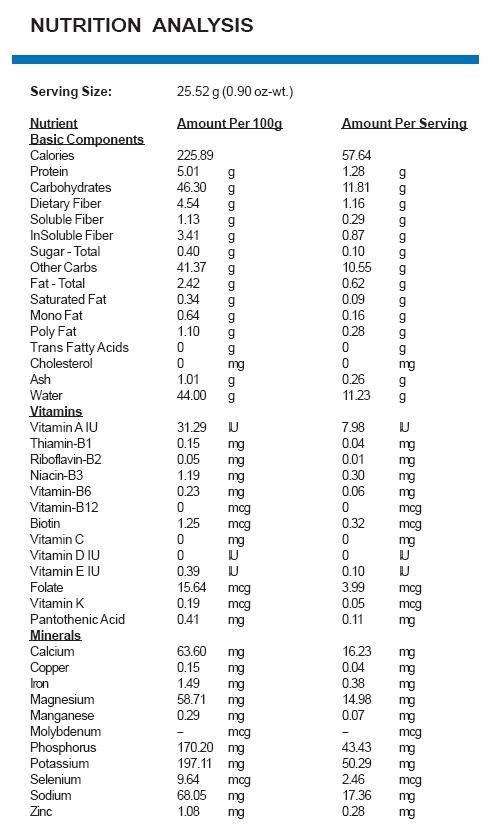In the vibrant tapestry of our daily lives, food plays a starring role, not just as sustenance, but as a celebration of culture, creativity, and community. Yet, beneath the tantalizing flavors and artful presentations lies a hidden layer of intrigue—the nutritional content that fuels our bodies and minds. As we journey through the world of culinary delights, understanding the nutritional makeup of our meals transforms eating from a mere routine into a mindful adventure. Imagine unlocking the secrets of your favorite dishes, where every bite becomes an opportunity to nourish not just your body, but your curiosity as well. With a spirit of optimism and discovery, let’s delve into the best ways to analyze the nutritional content of your meals, empowering you to make informed choices that align with your health goals while savoring every moment of the culinary experience.
Understanding Your Plate: A Dive into Nutritional Analysis
When it comes to understanding the nutritional content of your meals, modern technology has made it easier than ever to become your own nutrition detective. With a variety of tools and resources at your disposal, you can gain deeper insights into what you’re eating. Food diaries and apps are a great starting point, allowing you to log each meal and receive instant feedback on calorie intake, macronutrient distribution, and even vitamin and mineral levels. These apps often come with barcode scanners, making it effortless to capture packaged food data. For those who prefer a more hands-on approach, reading food labels carefully can provide a wealth of information, from ingredient lists to nutrient percentages based on a 2,000-calorie diet.
- Visual Plate Method: Use the visual plate method by dividing your plate into sections for proteins, carbs, and vegetables to ensure a balanced meal.
- Consultation with a Nutritionist: For personalized advice, consider a consultation with a nutritionist who can provide tailored dietary recommendations.
- Online Nutrition Databases: Utilize online nutrition databases like USDA’s FoodData Central to access detailed nutritional profiles of thousands of foods.
By engaging with these resources, you empower yourself to make informed decisions about your diet, leading to a healthier lifestyle. Embrace the journey of nutritional exploration, and soon, you’ll be crafting meals that not only satisfy your taste buds but also nurture your body.

Harnessing Technology: Apps and Tools for Meal Insights
In the digital age, understanding what goes into our meals has never been easier. With a plethora of apps and tools at our fingertips, gaining insights into nutritional content is both accessible and engaging. MyFitnessPal is a popular choice, offering a comprehensive database that lets you track calories and nutrients with ease. For those who prefer a more visual approach, Yazio provides colorful charts and daily nutrition tips to keep you motivated on your journey to healthier eating. Meanwhile, Cronometer goes beyond calorie counting, offering in-depth micronutrient tracking that can be particularly useful for those with specific dietary goals.
- Fooducate: Scan barcodes to get detailed nutritional information and healthier alternatives.
- Carb Manager: Ideal for those on keto or low-carb diets, this app helps monitor macronutrients effectively.
- Shopwell: Tailor your food choices to personal health goals and dietary restrictions.
These digital tools not only simplify the process of nutritional analysis but also empower you to make informed decisions about your dietary habits. Embrace technology as your partner in health and discover a new world of meal insights that inspire better eating habits and a more balanced lifestyle.

Decoding Labels: Making Sense of Nutritional Information
Understanding nutritional labels can transform the way you approach meal planning, empowering you to make healthier choices effortlessly. Start by examining the serving size; it’s the gateway to understanding the rest of the information. Often, the packaging may seem like a single serving, but it might contain multiple servings, altering your intake calculations. Look at the calories next. It’s important to know how much energy your meal will provide, helping you balance it with your daily requirements.
Pay close attention to the list of ingredients, as it can reveal hidden sugars or unhealthy fats disguised under unfamiliar names. Ingredients are listed in order of quantity, so if sugar is at the top, it might be best to reconsider. Focus on the amount of saturated fat, sodium, and added sugars as these are often consumed in excess. Instead, aim for meals high in fiber, vitamins, and minerals for a balanced diet. To simplify your shopping, consider these tips:
- Compare labels to choose products with better nutritional value.
- Use apps or online tools to quickly scan and evaluate nutritional content.
- Look for products with shorter ingredient lists for more natural options.
Crafting Balanced Meals: Expert Tips for Nutrient-Rich Diets
Embarking on a journey to healthier eating begins with understanding the nutritional profile of your meals. Unlock the secrets of nutrient-rich diets by learning to analyze your meals effectively. Start by keeping a food diary and use apps or online tools that break down the nutrient content of ingredients. This will help you visualize what you’re consuming and where you might be lacking. It’s also beneficial to familiarize yourself with food labels, paying attention to serving sizes and nutrient percentages.
- Visualize Your Plate: Aim for a colorful array of vegetables, lean proteins, and whole grains. A vibrant plate often means a variety of nutrients.
- Embrace Technology: Use nutritional analysis software to evaluate recipes and meals, giving you insight into calorie, fat, protein, and carbohydrate content.
- Balance and Portion Control: Strive for a balance of macronutrients and don’t overlook portion sizes, as even healthy foods can contribute to excess calories if portions are too large.
By adopting these strategies, you can ensure that your meals are not only delicious but also packed with the nutrients your body needs to thrive. Remember, the goal is progress, not perfection, as you cultivate a more mindful approach to eating.



